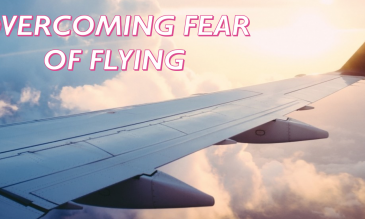What requirements apply when traveling with children on Virgin Australia flights?
Any child 23 months or younger is considered an infant and must be accompanied by a passenger 15 years of age and over, or the parent or legal guardian (13 years of age and over). Only one infant may be booked to travel on the lap of each adult or guardian. Infants must be nursed on an adult’s lap and restrained with an infant seatbelt whenever the seatbelt sign is illuminated. Infants can occupy a seat, but only in an approved child restraint system.
Any child over 2 years of age, who is not yet 12 is considered a child and must occupy a seat with their own ticket.
What options do I have when traveling with an infant?
On any Virgin Australia flight, passengers traveling with infants may choose between holding them on their lap and purchasing a separate seat for the infant:
- On domestic flights, infants travel free if they do not occupy a seat. Passengers may purchase a seat for their infants for extra comfort, which will be charged at full price.
- For trans-Tasman flights, infants are charged10% of the full fare (excluding taxes, surcharges, and fees) if they do not occupy a seat. Purchasing a seat for an infant will be charged at full price.
- For short-haul (except trans-Tasman) and long-haul International flights, infants under 2 years are charged 10% of the full fare (excluding surcharges, taxes, and fees) if they do not occupy a seat. Purchasing an extra seat for an infant will be charged at 75% of the full fare.
Are there children discounts offered by Virgin Australia?
For children, passengers over 2 years of age who are not yet 12 years of age, Virgin Australia may offer discounts depending on the itinerary:
- Domestic and trans-Tasman flights – a child seat is charged at full price.
- International short-haul flights (except trans-Tasman) – a child seat is charged at 75% of the full fare (excluding taxes, fees, and surcharges).
Infant on Lap
Check-in
Passengers with a baby need 1 hour before departure of a domestic flight, and 2 hours for international travel when checking-in. Check-in team members may request proof of date of birth, like extracts or copies of birth certificates. Infants need the proper travel documents to travel, like adults.
Baggage
Passengers traveling with an infant can take on board an extra carry-on bag containing articles for use in the cabin such as nappies or baby food.
On domestic and short-haul international flights, three special infant items can be carried as checked baggage, free of charge, even if the adult does not have a baggage allowance. Infant items include but are not restricted to pram/stroller, car seat, portable cot, and baby capsule. For all fares except the Economy Lite fare, you may check in a 23 kg bag as part of the special infant items allowance.
Infants with Reserved Seats
When infants travel in their own seat, an approved child restraint system (CRS) must be used on board. CRSs include car seats and harness-type restraints. The child restraint device must be certified for carriage in an aircraft (labeling/marking requirements) and meet the acceptance criteria:
- Designed so that it can be secured with a fastened lap belt only.
- Not exceeding a width of 44 cm (17 inches).
- Designed to restrain the child’s weight, which, unless otherwise specified on the label, is 9 kg or less for rear-facing restraints and 18 kg or less for forward-facing restraints.
- In good condition, not showing any sign of damage.
- With a single release harness that secures your child’s lap belt, and torso and shoulder straps.
- With a solid back and seat.
Virgin Australia does not provide but permits the use of the CARES Child Restraint onboard for infants and children. This device must be used in accordance with operating instructions and must have the original label intact.
At check-in and onboard, a visual assessment of all devices will be conducted by Virgin Australia staff. All labels, supporting paperwork, and operating instructions must be clearly visible and available for inspection, at all times. If it is determined that a particular device does not meet the acceptance criteria, it must be transported as checked baggage. If accepted for carriage, car seats must also be:
- Installed in the aircraft seat by the parent or guardian.
- Allocated according to airline seating rules, not impeding passengers’ access to the aisle or exit routes.

 En
En Es
Es Fr
Fr







